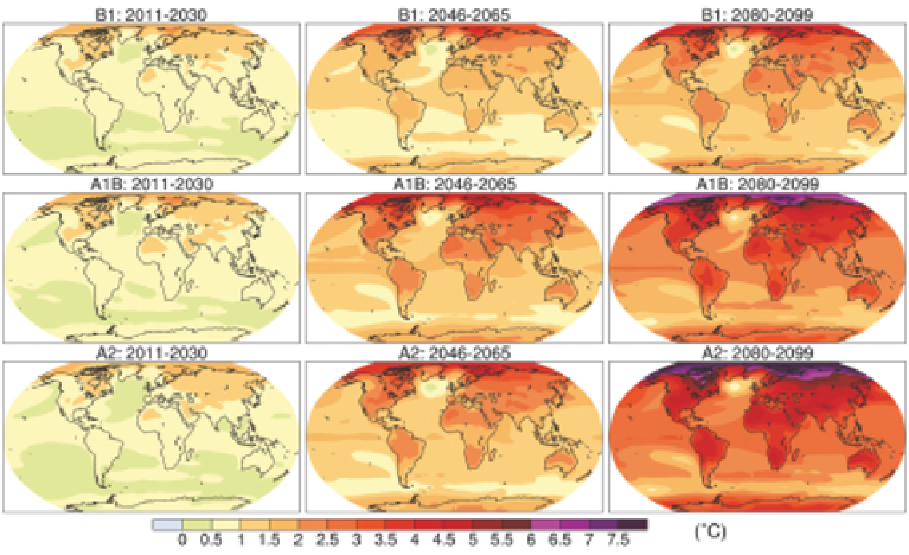Geoscience Reference
In-Depth Information
Figure 13.18
Projected changes in annual mean surface air temperature, relative to the base period 1980-1999,
for the 20-year periods 2011-2030, 2046-2065 and 2080-2099. Results are given for the B1 (top), A1B (middle) and
A2 (bottom) emissions scenarios based on global climate models participating in the IPCC Fourth Assessment
Report. The maps represent the multi-model average.
Source: IPCC (2007). Reproduced by permission of the IPCC (ch. 10, Global climate projections, Report of WG1 1, IPCC, p. 766,
fig. 10.8).
from a much colder atmosphere. However, as the
climate warms, the summer melt season lengthens
and intensifies, leading to less sea ice at summer's
end. Summertime absorption of solar radiation
in open-water areas increases, raising the
heat content of the ocean mixed layer. Sea ice
formation in autumn is hence delayed, and the ice
that grows is thinner than it once was. This results
in large upward heat fluxes from the ocean to the
atmosphere during autumn and winter. A longer
snow-free season over land (meaning stronger
absorbtion of solar radiation and hence stronger
heating of the lower atmosphere) contributes to
the amplification effect. While the results in
Figure
13.18
are for the multi-model average, Arctic
amplification is a feature of all models. Note that
projected warming in the Antarctic is not as great.
This largely manifests the different nature of the
ocean circulation in southern high latitudes. In the
Arctic, the upper ocean is very stably stratified,
such that ocean heat gained in summer stays near
the surface to help melt sea ice (and delay autumn
ice growth). By contrast, heat absorbed at the
ocean surface in high southern latitudes is rapidly
mixed to deeper ocean levels. Another interesting
feature of
Figure 13.18
is that, given the large
thermal inertia of the ocean, there is a general
pattern of smaller warming over the ocean than
land. Finally, note the distinct region of only small
warming over the northern North Atlantic in the
projections for 2046-2065 and (even more clearly)
for 2080-2099. This manifests projected slowing
of poleward ocean heat transport via the Atlantic
Meridional Overturning Circulation.


